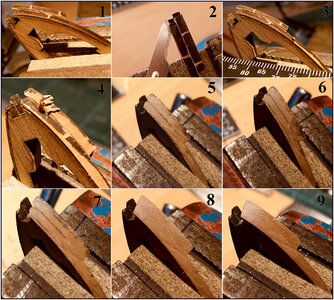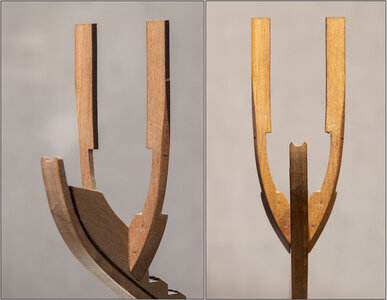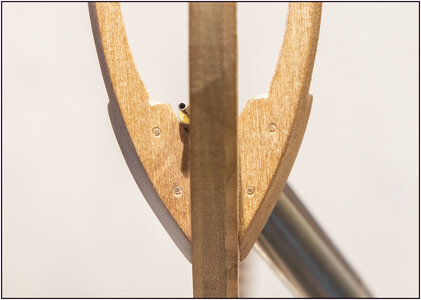In several build-logs I have seen the how to bevel the frames , with the techniques applied. Usually a matter of sanding up to the lines.
For me, this is new. When I beveled part #18 of the keel, it was filing, sanding, filing, sanding etc, just as long as I was on top of the laser lines and on the side the laser char was gone. So that was also producing a lot of dust.
With my 1st frame I did something else. Partly because I did come across some points that I have not yet seen specifically mentioned on the forum.
I have taken a picture of all the stages and will explain it in 9 steps:
View attachment 213219
1: A laser line indicates where and how far the bevel goes.
2: But it's not a laser line but a
laser groove. At the tip of the scalpel knife you can see how deep it is. With
laser char inside.
3: To reduce the dust, I first started cutting with the scalpel blades. It was like a scrape. That gave a nice fine curl. Matter of using a new sharp knife, supporting the hands properly and not wanting too much at once.
4: For me this worked well. More and more beautiful curls.
5: When I got to the laser line, basically the end of the bevel, I switched to diamond filings. And the laser char of the groove slowly emerged. So that gives extra blacking on the frame you don't want to have.
6: The black of the laser groove over the full length still to be seen. So there's still some wood left to get rid of that black as well.
7: With a pencil always blackened the work to be edited, so you keep seeing on the other side (here on the right) you don't take anything too much away. Keep filing, sanding, blackening, filing, sanding, blackening....
8: Finally after the last sanding a satisfactory result.
9: Just polish and then move on to the other side.
The bevel is therefore in principle slightly bigger / further than the indicated line. But I don't think it's any different than sloping a little further to get rid of the filthy black.
And yes, this takes quite some time. But while doing so one learns and it will go quite a bit faster.
Anyway, 55 frames to go.....
Reghards, Peter








